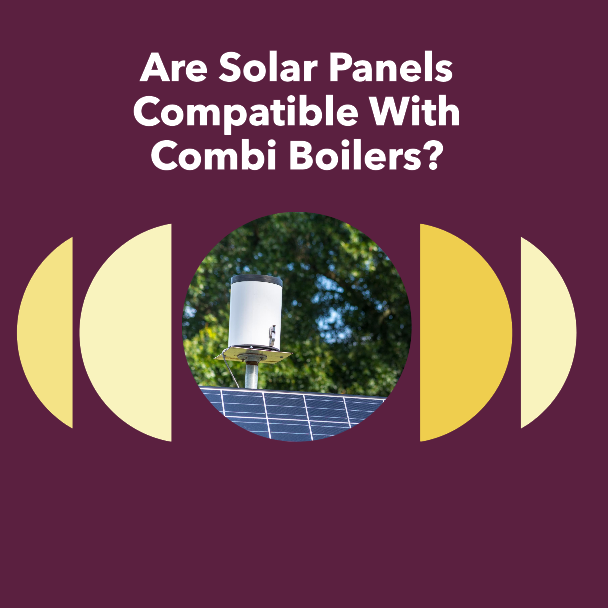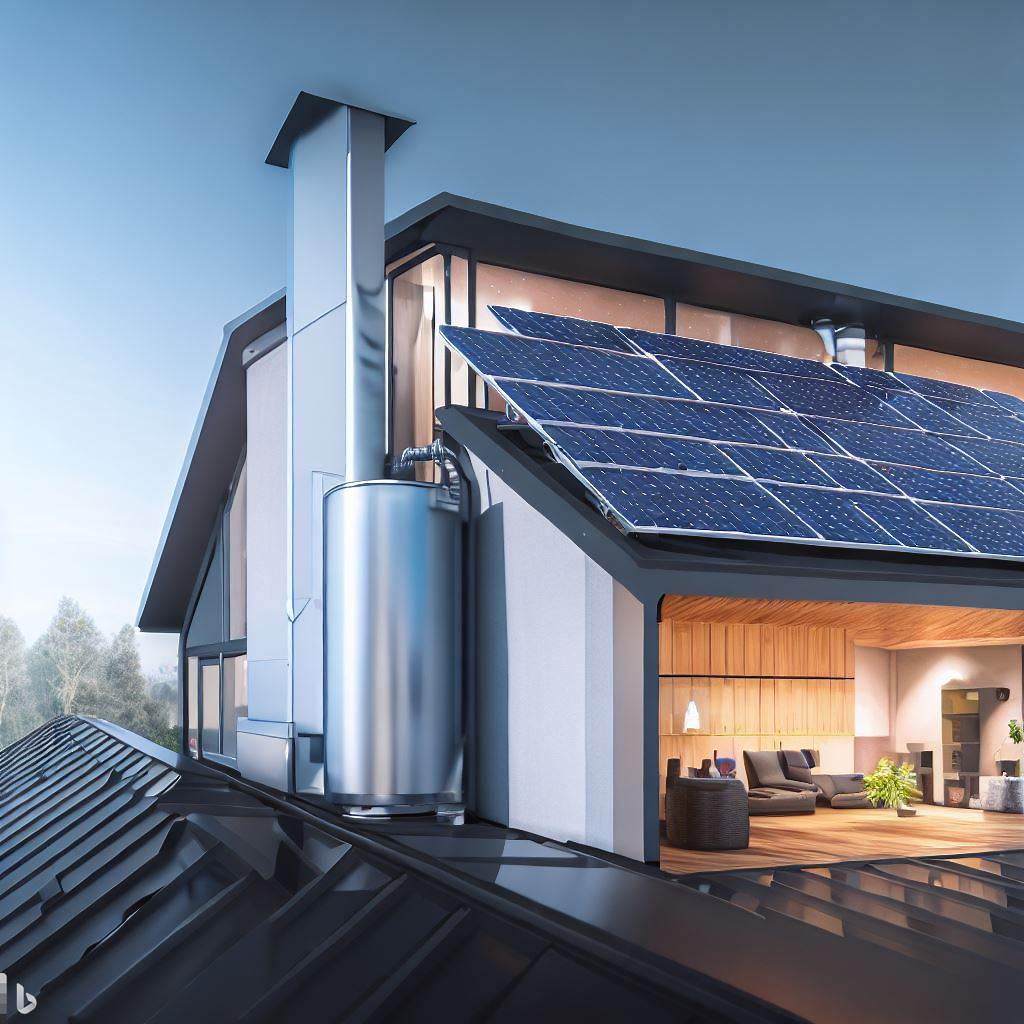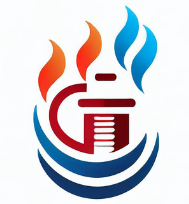Solar panels, or photovoltaic (PV) panels, convert solar energy into electricity using solar cells. When sunlight hits the panels, electrons are released, generating electricity that can power devices and appliances. They are a renewable and sustainable alternative to fossil fuels, with different types like monocrystalline, polycrystalline, and thin film. Inverters convert the DC electricity to AC for household use, with monocrystalline panels being the most efficient.
However, combi boilers may not be compatible with solar thermal systems that pre-heat water. Some newer combination boiler models are designed to accept pre-heated water from a solar thermal system up to a certain temperature. But many conventional combi boilers are not capable of utilising pre-heated water from solar panels.

Benefits of combining solar panels and combi boilers
Installing solar panels along with a combi boiler can provide several benefits, provided the two systems are properly integrated. Here are some of the main advantages of combining these technologies:
- Reduced energy bills – By generating your own electricity from solar panels, you can reduce your reliance on grid electricity during daylight hours. Any excess solar electricity can also be exported back to the grid for additional savings. The solar thermal system pre-heats water entering the combi boiler, reducing gas/fuel consumption.
- Increased efficiency – The combi boiler does not have to work as hard to heat water coming from the cylinders pre-heated by solar thermal. This improves the system efficiency.
- Renewable and sustainable – Solar energy is a clean, renewable source of power. Using solar thermal and PV systems reduces your carbon footprint.
- Financial incentives – The UK government offers schemes like the Feed-in Tariff for generating your own solar electricity. This can improve return on investment.
- Reduced boiler wear – Since the boiler does not have to heat cold water from mains temperature, it undergoes less thermal stress. This extends the working life of the boiler.
- Hot water availability – The solar immersion heater connected to the hot water cylinder can provide free hot water for most of the year.
Challenges
However, there are some challenges to overcome when connecting solar thermal systems to combi boilers:
- Compatibility issues – As mentioned earlier, many conventional combi boilers cannot accept pre-heated water from solar thermal collectors. The boilers must have temperature rated components.
- Control complexity – Sophisticated control systems may be needed to manage the solar thermal side and properly integrate it with the combi boiler.
- Additional costs – Installing the solar thermal system, hot water cylinder and integrative controls increases the upfront costs.
- Space requirements – Space is need to install the hot water cylinder and ancillary equipment. This may not be feasible in some small properties.
Factors to consider
Here are some key factors to consider when installing a solar and combi boiler hybrid system:
- The make and model of the existing combi boiler
- Age and condition of the current boiler
- Available space for installing the hot water cylinder
- Roof orientation and shadowing (for the solar panels)
- Hot water usage patterns
- Local weather and solar irradiance levels
- Budget for the solar thermal system and integration costs
Proper design is crucial for optimum performance and efficiency of a combined solar and combi boiler system. Consult with qualified heating engineers to ensure compatibility and effective integration.
Eco-Friendly Boilers: A Sustainable Heating Solution: Check out other viable solutions
How solar thermal systems work with hot water cylinders
Solar thermal systems require a hot water cylinder to store the heated water for later use. Here is an overview of how solar thermal works with hot water cylinders:
- Solar collectors (evacuated tubes or flat panels) are mounted on the roof. A heat transfer fluid is pumped through these collectors.
- The fluid absorbs heat from the sun and transfers it to the hot water cylinder via a coil heat exchanger.
- Inside the cylinder, cold water from the mains passes through this coil and gets heated up.
- The pre-heated water then flows from the cylinder to the combi boiler for further heating as required.
- A pump circulates the heat transfer fluid between the solar collectors and the hot water cylinder.
- The pump, valves and controls manage the flow rates to optimise hot water production.
- A differential controller monitors the temperature difference between the solar collectors and the water in the cylinder. This regulates the pump operation.
- The table below shows a typical configuration:
| Component | Description |
|---|---|
| Solar collectors | Absorb heat from sunlight |
| Heat transfer fluid | Transfers heat from collectors to cylinder |
| Hot water cylinder | Stores pre-heated water |
| Coil heat exchanger | Transfers heat from fluid to water |
| Pump | Circulates heat transfer fluid |
| Controls | Manage system operation |
On sunny days, the system provides sufficient hot water. On cloudy days, the boiler boosts the water temperature as required. This hybrid approach provides optimal efficiency.
Challenges of integrating solar panels with combi boilers
While combining solar panels and combi boilers can provide benefits, there are some key challenges involved in integrating these two technologies:
- Compatibility – This is the major hurdle. As mentioned already, many conventional combi boilers are not designed to handle pre-heated water from a solar thermal system. The boilers must have temperature rated components to accept pre-heated water.
- Control integration – The solar thermal system operation needs to be seamlessly integrated with the combi boiler controls. Advanced electronic controllers may be required to manage both sub-systems.
- Hot water usage patterns – Solar energy availability differs from hot water usage peaks in mornings and evenings. Integrating solar thermal with combi boilers can be complex in households with unusual or intermittent usage.
- Weather dependence – Solar thermal output varies widely depending on weather conditions. Cloudy weather can significantly reduce solar yield. The system must be able to smoothly augment with the combi boiler.
- Space constraints – Finding sufficient room to install the hot water cylinder and associated equipment can be difficult, especially in compact homes.
- Costs – Besides the solar thermal hardware, additional costs are incurred for the hot water cylinder, controls, and integration efforts. This increases the payback period.
- Structural factors – The roof must be able to structurally support the weight of the solar panels and frame. Roof orientation and pitch also impact solar collector placement and yield.
Proper planning and design is essential before integrating solar thermal systems with combi boilers.
A tailored solution needs to be developed based on the specific combi boiler model, household hot water demand profiles, and other factors. Consult qualified installers to integrate the two systems for optimal efficiency.
Other boiler solutions – Hydrogen Ready Boiler: The Future of Home Heating
Factors to check if combi boiler accepts pre-heated water
If you want to integrate a solar thermal system with your existing combi boiler, the key factor to check is whether the boiler accepts pre-heated water from the solar collectors. Here are some tips on how to assess this:
- Boiler manual – The installation manual or technical specs for your combi boiler should clearly specify if the model supports pre-heating and the maximum temperature allowed. This is the first and most important thing to check.
- Consult manufacturer – If the manual does not provide clear guidelines, then directly contact the boiler manufacturer and ask if your specific model can accept pre-heated input and up to what temperature.
- Boiler plumbing – Visually inspect the internal plumbing layout of the combi boiler. Check for a dedicated pre-heat water inlet connection. If absent, it likely cannot handle pre-heating.
- Age of boiler – Modern condensing combi boilers manufactured in the last 5-10 years are more likely to support pre-heating capabilities. Older models probably won’t.
- Tempering valve – Check if the combi boiler has an in-built tempering valve to mix cold water and regulate temperature. This is a good indicator it can handle pre-heated water input.
- Installer advice – Talk to qualified plumbers and heating engineers. They will be familiar with different boiler makes/models and their pre-heat compatibility.
- Consider upgrades – If your current combi boiler cannot support pre-heating, you may need to upgrade or replace it for integrating with solar thermal.
With proper research and advice, you can determine if integrating solar thermal with your existing combi boiler is feasible. Factor in compatibility before making investment decisions.

Conventional boilers compatible with solar thermal
If your existing boiler is a conventional boiler with a separate hot water cylinder, then integrating solar thermal is straightforward. Here are some tips on conventional boilers compatible with solar:
- Regular boilers – Regular or standard boilers with a hot water cylinder are naturally compatible with solar thermal systems. The pre-heated water from the solar collectors simply flows into the hot water cylinder.
- System boilers – System boilers heat water on demand from a cylinder. These are also fully compatible with solar thermal. The cylinder is linked to the solar collectors.
- Open vented systems – Conventional boilers with open vented heating systems and hot water cylinders can easily integrate with solar thermal. Pre-heating poses no issues.
- Sealed systems – Even sealed system boilers that use an expansion vessel can work with solar thermal. Pre-heated water enters the solar cylinder.
- Cylinder thermostat – The hot water cylinder should have a dual thermostat to manage heating by the boiler and solar thermal system separately.
- Control integration – Linking the solar thermal controls to the boiler controls enables seamless operation. No major retrofitting is needed.
- Tempering valve – A tempering valve may be required if the solar thermal system supplies excessively hot water beyond the cylinder’s normal temperature range.
The table summarizes compatible boiler types:
| Boiler Type | Compatibility |
|---|---|
| Regular/Standard | Excellent |
| System | Excellent |
| Open Vented | Very Good |
| Sealed System | Very Good |
So in most cases, conventional boilers paired with hot water cylinders can easily integrate with solar thermal systems.
This is a much simpler solution compared to retrofitting solar thermal to combi boilers.
Combination boiler models compatible with solar PV
For solar photovoltaic (PV) systems that generate electricity, the key factor is having a combi boiler that can connect to the grid and use PV power. Here are some tips on compatible combination boiler models:
- Check if the combi boiler has an inverter that can use DC electricity from the solar PV panels directly. Some high-end boilers come with built-in inverters.
- Most combi boilers can connect to the regular 230V AC grid supply. As long as the solar PV system is grid-tied and supplies AC power, the combi boiler can use this energy.
- Smart “solar ready” combination boilers have dedicated connections and built-in controls to integrate with solar PV systems. These automatically use solar electricity when available.
- Condensing combi boilers that modulate their power input are better able to match varying solar PV output compared to traditional on/off boilers.
- Combination boilers with large digital displays showing energy usage are helpful to track solar PV power consumption.
- Solar PV divert devices can channel excess solar electricity to an immersion heater which heats water during the day for later use. This reduces boiler usage.
- Some combi boiler models also allow connecting to a battery storage system paired with the solar PV array. This enables full off-grid operation.
| Boiler Feature | Compatibility |
|---|---|
| Inverter input | Excellent |
| Grid-tied | Very Good |
| Solar ready | Excellent |
| Modulating condensing | Very Good |
| Usage monitoring | Good |
| Diverter to immersion heater | Very Good |
| Battery storage input | Excellent |
In summary, there are several combi boiler models with features that make integration with solar PV systems simple and efficient. Check for these aspects when selecting a combination boiler.
Tips for installing solar panels with existing heating system
Here are some useful tips for installing solar panels along with your existing heating system:
- Carefully survey your roof space to determine the best placement for the solar panels – consider orientation, pitch, shading, etc.
- Use online solar tools to model the estimated generation at your location based on roof geometry, panel tilt and azimuth.
- If integrating solar thermal, ensure adequate south facing roof space for the collectors. For solar PV, east-west facing works too.
- Check the condition of the roof and ability to structurally hold the additional weight of the panels and mounts. Strengthen if required.
- Consider the sizing and layout of the solar panels – for grid-tied systems, match the solar PV array capacity to your electricity consumption.
- For solar thermal, size the collectors based on hot water demand and the capacity of the hot water cylinder.
- Verify compatibility and secure clearances for integrating with the existing combi boiler or conventional boiler.
- Ensure the current hot water cylinder (if present) has necessary connections and dual thermostats. Upgrade if needed.
- Make provisions for new cabling runs and conduit layouts required for the solar panels.
- Organize scaffolding or roof access via a boom lift for the installation work. Coordinate with the solar vendor.
- Carefully weatherproof all penetrations into the roof during solar panel installations.
- Verify that the existing electrical system, wiring and metering can handle the additional solar loads. Upgrade if required.
- Commission a qualified electrician to interconnect with the household electrical system and grid.
Thorough planning, roof assessment, verification of structural adequacy and heating system compatibility is vital for a successful solar installation.
Combining a Combi Boiler with Solar Panels: Top Questions Answered
Conclusion – Get professional advice on compatibility
Determining the right solar solution and integration approach requires an in-depth evaluation of your existing heating system, hot water usage patterns, roof layout and structural factors.
Consult qualified engineers to verify compatibility with your current combi boiler or conventional boiler system. They can advise on the feasibility and help design an optimal solution tailored to your needs. Consider upgrades if your current boiler is incompatible.
A certified technician should handle the complexities of installing and integrating the solar panels, hot water cylinder, controls and electrical connections.
Proper integration is crucial to harness the full benefits of solar thermal or PV. With expert help, you can implement a high-performance, low-carbon hybrid system with solar panels and heating working together efficiently.
